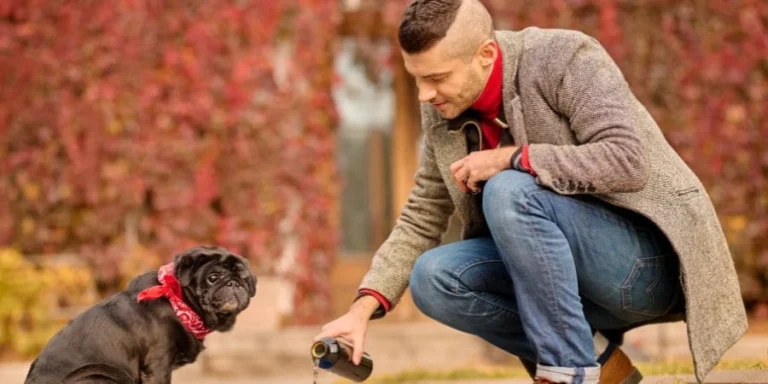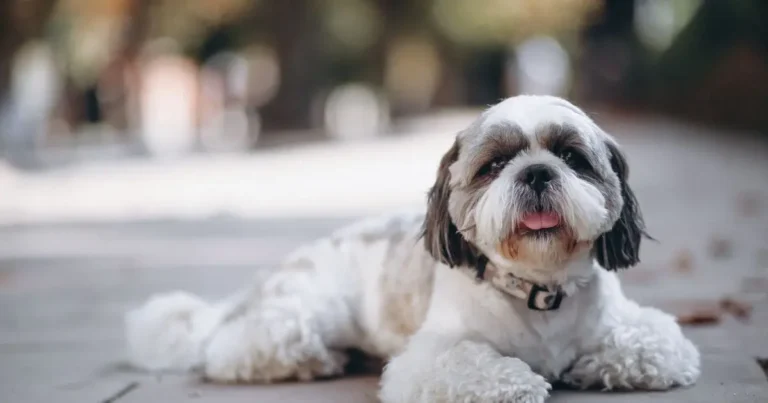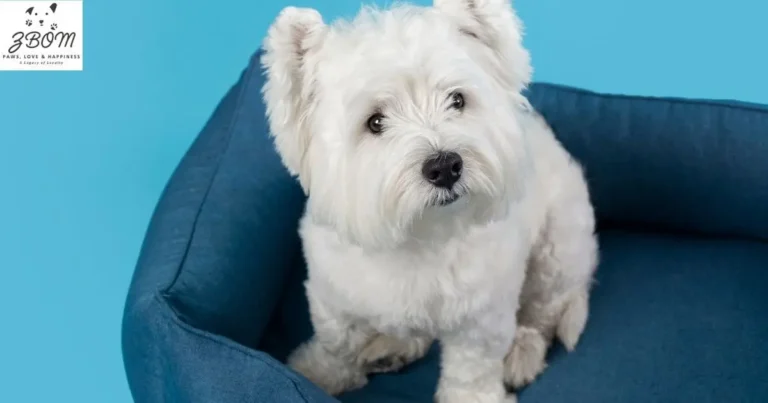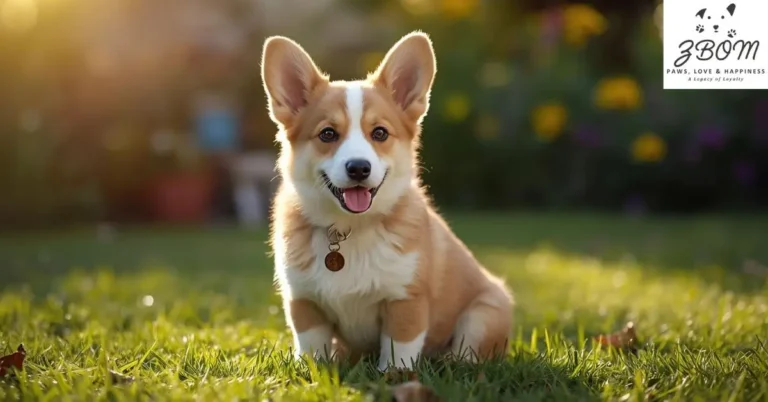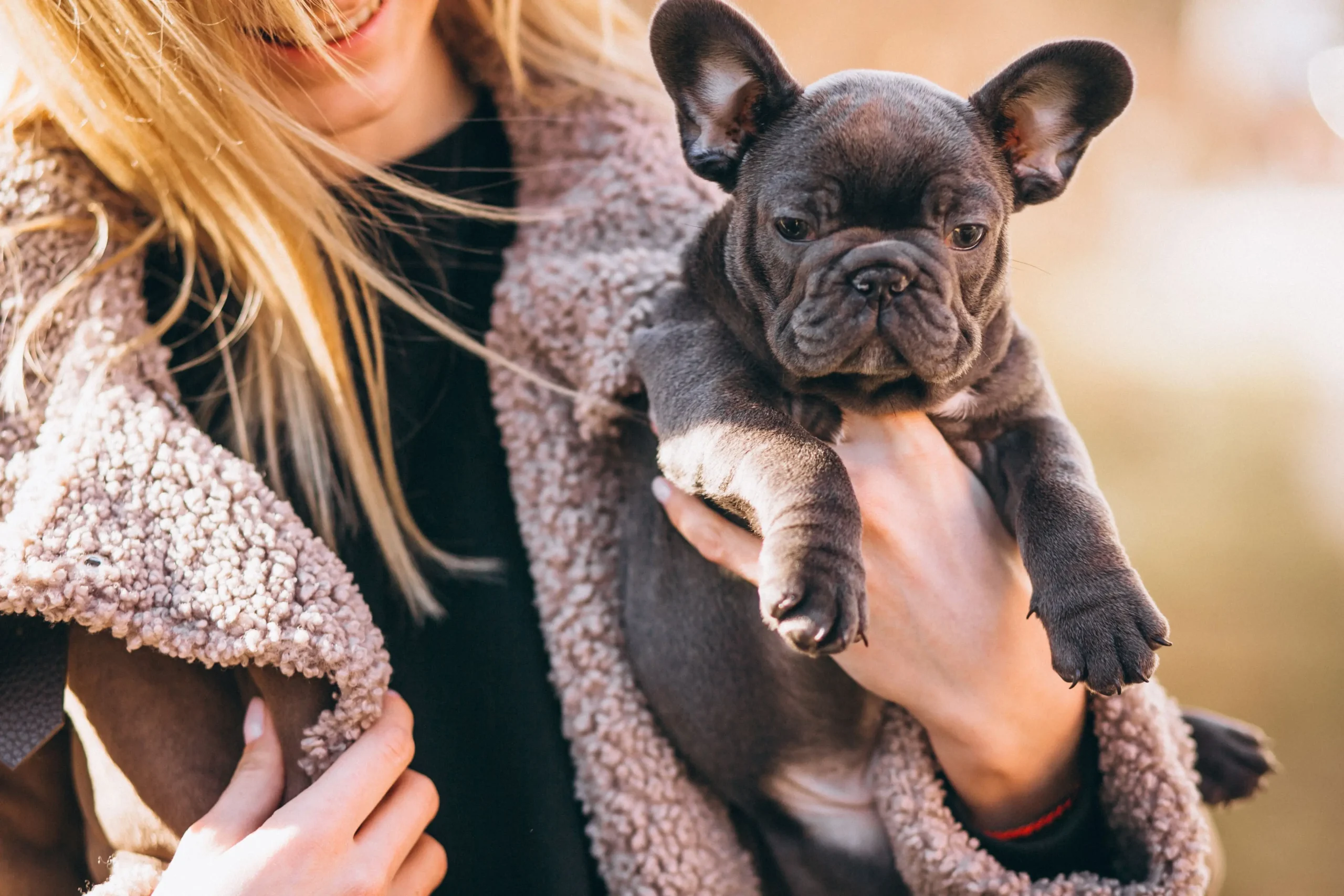
How to Identify Isabella Frenchie Color
How to Identify Isabella Frenchie Color, Identifying the Isabella Frenchie color is a blend of science, observation, and a deep appreciation for one of the rarest shades found in French Bulldogs. This unique color stands out for its beautiful silvery-lilac tone, often described as a soft mix of light brown and pale gray with a subtle purple hue. It’s a color that immediately catches the eye and is highly valued among Frenchie enthusiasts for its rarity and elegance. However, spotting a true Isabella Frenchie isn’t always easy—it requires understanding both genetics and physical characteristics that set this color apart from others.
The Isabella color is created by a special combination of recessive genes, specifically the blue dilution gene (dd) and the chocolate dilution gene (bb). When these two genetic traits come together, they produce a double dilution effect, giving the Frenchie its signature lilac or silvery-brown coat. This genetic mix lightens the usual dark pigment found in the coat, eyes, and nose, creating an overall soft and pastel-like appearance. Because both parents must carry these rare genes, true Isabella Frenchies are uncommon and often come from carefully planned breeding programs.
To identify an Isabella Frenchie, start by looking closely at the coat color. A genuine Isabella coat has a cool undertone with a pale, almost dusty lilac shade. It’s not quite gray and not exactly brown—more of a muted blend that reflects a faint silvery shimmer in the sunlight. How to Identify Isabella Frenchie Color, Many people confuse Isabella with lilac or blue Frenchies, but the difference lies in the warmth of the tone; Isabella tend to have a creamier or beige tint that gives them their distinct look.
Beyond the coat, the nose, eyes, and paw pads are key identifiers. Unlike standard French Bulldogs with black or dark brown noses, Isabella Frenchies have light brown, pinkish, or liver-colored noses. Their eyes often appear in light amber, hazel, or soft grey shades, giving them an enchanting and gentle expression. The paw pads and lips usually share the same diluted pigment, appearing lighter than usual.
In short, recognizing an Isabella Frenchie means paying attention to every detail—from the coat’s lilac-brown tone to the lighter nose and eye color. This color is more than just a visual trait; it’s a genetic masterpiece that highlights the beauty and diversity within the French Bulldog breed.
Also Read: How Old does a Dog have to be a Breed
Short Answer About: What do all those letters mean under the picture of that cute French Bulldog puppy?
When you see a bunch of letters under the picture of a cute French Bulldog puppy, those letters are actually a code that describes the puppy’s genetic makeup—basically, its DNA for color and coat pattern. Breeders use these genetic codes to understand which color traits the puppy has and which ones it can pass on to its future puppies.
For example, the letter “D” stands for dilution, which lightens coat colors. How to Identify Isabella Frenchie Color, If the code says “dd,” it means the puppy carries two dilution genes, turning darker shades like black or chocolate into lighter tones such as blue or lilac. The letter “B” represents the chocolate gene, and “bb” means the puppy has inherited that gene from both parents. The “A” gene controls coat patterns, like fawn, brindle, or tan points.
Together, these letters form a kind of genetic map that helps breeders identify the exact color and pattern of the Frenchie. So, those little letters under the picture aren’t random—they’re scientific clues that explain why your adorable French Bulldog looks the way it does. It’s like reading the puppy’s genetic story written in letters instead of words.
Also Read: How to Choose the Best Whelping Box French Bulldogs
What do all those letters mean under the picture of that cute French Bulldog puppy?
French Bulldog breeding has become increasingly popular among dog enthusiasts who are fascinated by the breed’s charm, personality, and unique coat colors. How to Identify Isabella Frenchie Color, Understanding Frenchie color genetics plays a vital role in producing healthy and well-colored puppies. Every breeder should be familiar with dog coat color codes, as these reveal the genetic makeup behind a Frenchie’s appearance. With the rise of the no fad colors movement, it’s more important than ever to prioritize French Bulldog health over just appearance, ensuring a strong color and health connection for every litter produced.
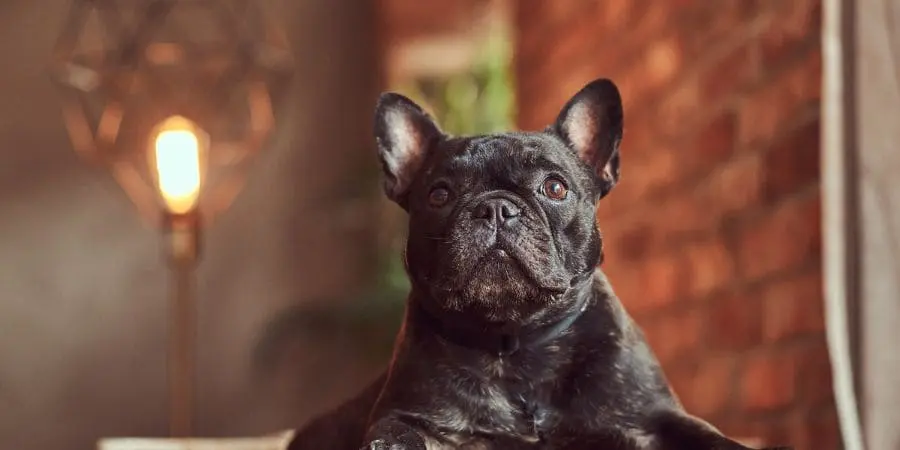
Many breeders and owners turn to resources like the Color Conflict blog to learn about responsible puppy selection and the importance of proper breeding research before pairing dogs. Practicing responsible breeding means not only focusing on coat shades but also considering genetic testing in dogs to prevent hereditary issues. When it comes to Frenchie color identification, breeders should understand that colors are more than just beauty—they’re a reflection of complex French Bulldog genetics.
Many breeders and owners turn to resources like the Color Conflict blog to learn about responsible puppy selection and the importance of proper breeding research before pairing dogs. How to Identify Isabella Frenchie Color, Practicing responsible breeding means not only focusing on coat shades but also considering genetic testing in dogs to prevent hereditary issues. When it comes to Frenchie color identification, breeders should understand that colors are more than just beauty—they’re a reflection of complex French Bulldog genetics.
A breeder who understands dog color inheritance, practices selective breeding practices, and values breeding education will produce Frenchies with stunning French Bulldog coat patterns and stable temperaments. Recognizing recessive and dominant genes helps control canine color variations responsibly.
How to Identify Isabella Frenchie Color, With genuine Frenchie breeding experience, you can master genetic pairing in animals to focus on improving offspring quality while staying true to the breed. This comprehensive approach creates a reliable French Bulldog color guide for ethical and knowledgeable breeders everywhere.
Also Read: How Long are French Bulldogs Pregnant
A-Locus (Pattern)
The A-locus, also known as the Agouti gene, plays a major role in determining a French Bulldog’s coat color. This locus has three main alleles: Ay allele, At allele, and a allele, each affecting how pigments are expressed on the dog’s coat. How to Identify Isabella Frenchie Color, Understanding fawn color genetics, tan point genetics, and solid coat French Bulldog traits requires studying how these alleles combine and interact with other genes.
For example, an Ay/Ay combination generally produces a fawn base coat, while an Ay/At combination results in a fawn base but also carries tan point markings. The At/At combination gives a tan point base coat, with light patches visible on the cheeks and eyebrow patches, as well as chest and leg markings. How to Identify Isabella Frenchie Color, Dogs with an At/a combination will show a tan point base coat while carrying the solid coat base gene. Only an a/a combination produces a true solid coat base, as this recessive gene a requires both copies from each parent.
The A-locus is responsible for the base coat color, controlling whether the dog shows black or red pigment, but it doesn’t act alone. K-locus interaction and E-locus interaction can override the Agouti gene. How to Identify Isabella Frenchie Color, For instance, a dog carrying the brindle gene (Kbr) will not show a fawn coat even with an Ay allele, while a dog with the cream covered gene (ee) will display a light coat, masking fawn or tan point expressions.
The dominant gene Ay ensures fawn color shows over other A-locus alleles unless modified by K-locus or E-locus genes. These genetic combinations in French Bulldogs are crucial for breeders to understand, especially when studying the brindle and fawn relation or managing coat color expression.
How to Identify Isabella Frenchie Color, Knowing how Agouti and K-locus relationships work helps predict French Bulldog coat variation accurately, ensuring breeders maintain desired traits while respecting recessive inheritance and color gene interaction. Mastering these principles allows breeders to exercise precise genetic base color control across dog color loci.
Also Read: How to Determine French Bulldog Litter Size
K-Locus (Black/Brindle)
The K-locus plays a major role in determining a French Bulldog’s coat pattern and color. This locus has two main alleles: the Kbr allele, which produces the brindle coat, and the Ky allele, which results in a black coat when present in two copies. How to Identify Isabella Frenchie Color, Different K-locus combinations produce distinct outcomes. For instance, a Ky/Ky combination has no brindle, leaving the dog’s coat unaffected by the K-locus.
A Kbr/Ky combination, with one copy brindle, expresses the brindle pattern but cannot be fawn even if Ay on the A-Locus. Dogs with Kbr/Kbr combination, carrying two copies brindle, also show a full brindle coat and continue the fawn restriction, overriding the Ay allele interaction.
The A-locus influence and coat color genetics work together with the K-locus to create a wide variety of French Bulldog coat variation. How to Identify Isabella Frenchie Color, Understanding gene interaction in dogs is essential for predicting brindle expression and how dominant and recessive K-locus genes impact a puppy’s look. Breeders use this knowledge for genetic coat control and Frenchie color prediction, as the K-locus effect on base color can override the dog color inheritance dictated by the A-locus.
Studying coat pattern genetics and the genetic impact on fur color helps breeders manage the A-locus and K-locus relationship, ensuring desired traits in their litters. How to Identify Isabella Frenchie Color, With careful attention to French Bulldog breeding genetics, coat color determination, and brindle masking fawn, breeders can select the best pairs while maintaining healthy dog pigment genes. Proper understanding of these loci ensures responsible breeding and predictable, beautiful coat results in French Bulldogs.
D-Locus (Blue)
The D-locus is one of the most important genes when it comes to coat color genetics in French Bulldogs. It consists of two alleles: the D allele (dominant D) and the d allele (recessive d). How to Identify Isabella Frenchie Color, This locus is responsible for the dilute gene, which controls coat color dilution and saturation reduction in the fur. A dog with a D/D combination does not carry the dilute gene and will have a black coat, while a D/d combination carries one copy of the dilute gene but still shows a black coat. Only a dog with a d/d combination will display the dilute effect, resulting in a blue coat, making them a true blue French Bulldog.
The D-locus can interact with other genes to create additional color variations. For example, when combined with co/co gene or b/b gene, the dilute effect can produce stunning colors like a lilac coat, Isabella coat, or the rare New Shade Isabella. How to Identify Isabella Frenchie Color, This shows how dilute expression and genetic color combinations can dramatically influence a Frenchie’s appearance.
Also Read: How Long are French Bulldogs Pregnant
Even within the blue variation, there is noticeable diversity. Some puppies show a lighter blue vs standard blue, reflecting subtle differences in Frenchie color differences caused by dilute inheritance. How to Identify Isabella Frenchie Color, Understanding the black to blue transformation and the dilution effect on coat allows breeders to practice genetic coat control and predict French Bulldog coat variation more accurately.
By paying attention to the D-locus, D allele, and d allele, breeders can manage Frenchie pigment genes responsibly, ensuring healthy dogs with beautiful, predictable color variation in French Bulldogs. How to Identify Isabella Frenchie Color, The difference between a standard blue and a lighter blue puppy variation highlights just how impactful the D-locus is in shaping the look of these beloved companions.
E-Locus (Cream)
The E-locus is a key factor in coat color genetics for French Bulldogs, determining both mask expression and the presence of the cream gene. The locus has three main alleles: the Elm allele, which produces a masked dog, the E allele, which allows for mask less expression, and the e allele, a recessive e-allele effect that can visually cover other colors. How to Identify Isabella Frenchie Color, A dog with an Em/Em combination or Em/E combination will be a masked dog, showing a dark muzzle, while Em/e combination produces a dog that is masked but carries cream, giving future litters the potential for lighter colors.
Dogs with E/E combination or E/e combination are mask less dogs, showing a light-colored muzzle, with E/e carriers capable of passing the cream gene. How to Identify Isabella Frenchie Color, Only e/e combination dogs will be visually cream, and this allele can cover other colors, though pied markings may still appear.
The tan points and fawn coat are the most obvious areas where the Frenchie muzzle color changes based on E-locus expression. Knowing your dog’s E-locus status is challenging without DNA testing for coat color, as parentage color influence alone may not predict exact results. How to Identify Isabella Frenchie Color, When the cream and dilute interaction occurs with blue gene or chocolate gene, it can create rare shades such as platinum coat, lilac platinum, or Isabella platinum, often accompanied by pink noses and foot pads.
Also Read: How Many Puppies do French Bulldogs Have
How to Identify Isabella Frenchie Color, Understanding the color gene combinations, coat color inheritance, and rare color variations helps breeders with genetic color prediction and maintaining healthy, visually appealing French Bulldogs. The E-locus is a cornerstone in dog pigment genetics, shaping both the muzzle and overall coat while allowing for extraordinary diversity in French Bulldog color variations.
B-Locus (Brown / Testable Chocolate)
The B-locus is a critical gene in coat color genetics for French Bulldogs, responsible for producing the brown dilution that affects the overall Frenchie coat shade. It has two alleles: the B allele, which does not produce brown, and the b allele, a recessive gene that requires two copies to show visual expression of brown. A B/B combination results in no brown dilution, while a B/b combination makes the dog a carrier of brown gene without expressing it visually. How to Identify Isabella Frenchie Color, Only a b/b combination produces a fully brown-colored dog.
The B-locus works in combination with the A-locus interaction and K-locus interaction, influencing the shade of brown and creating unique French Bulldog color variations. When a dog carries both did gene and bb gene, it results in an Isabella French Bulldog, a rare and highly sought-after color. Adding the cocoa genes creates the New Shade Isabella, enhancing the brown tone. How to Identify Isabella Frenchie Color, If the dog also carries eel gene, it will have light brown noses and light brown foot pads instead of the typical black nose or blue nose.
Understanding dilute and brown combination and color gene interaction allows breeders to practice precise genetic coat control and predict potential rare color variations in French Bulldogs. By mastering these dog pigment genes and recessive color expression, breeders can achieve accurate genetic color prediction while maintaining healthy, visually striking Frenchie coat shades. How to Identify Isabella Frenchie Color, This knowledge ensures that every puppy carries the intended traits, combining brown coat genetics with other color loci to create the most beautiful and rare variations.
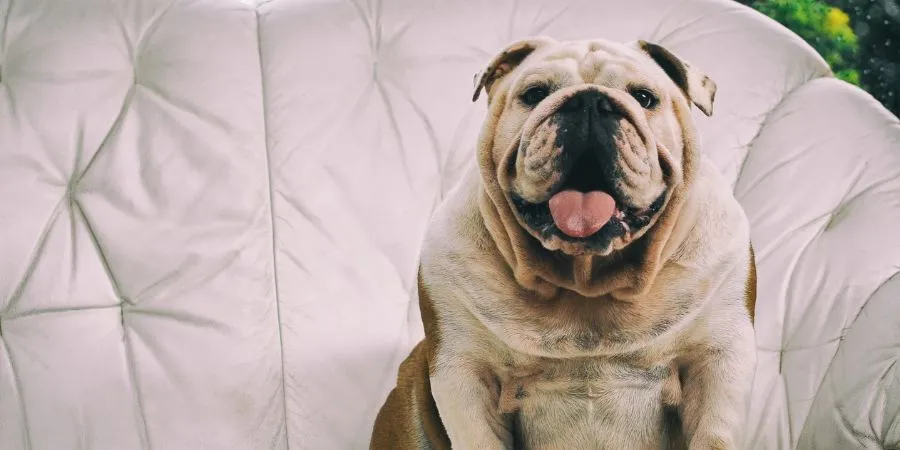
Cocoa (Brown / “non-testable”)
The Co-locus is an important gene in French Bulldog color genetics, directly influencing brown coat genetics and creating unique coat color variation. It includes the Co allele, which does not produce a brown shade, and the N allele, which can make a dog a carrier of cocoa gene without showing it visually. How to Identify Isabella Frenchie Color, A Co/Co combination or N/co combination does not express brown, while a co/co combination produces the brown dilution known as non-testable chocolate.
How to Identify Isabella Frenchie Color, The Co-locus works alongside the A-locus interaction and K-locus interaction to affect the shade of brown in a dog’s coat. Dogs with the b/b gene in combination with co/co often have a lighter coat color, resulting in what breeders call a lilac French Bulldog.
How to Identify Isabella Frenchie Color, It is important to note that standard blue dogs may appear similar to lilacs, but without carrying two copies of the cocoa gene expression, they are not true lilac. This distinction highlights the need for accuracy in puppy color mislabeling and maintaining Frenchie color accuracy.
The recessive gene nature of co/co means it requires two copies for visual expression of color, and when combined with dilute and cocoa combination, it can create stunning, rare shades in rare Frenchie colors. How to Identify Isabella Frenchie Color, Understanding dog pigment genetics, color gene interaction, and color inheritance in French Bulldogs allows breeders to exercise genetic coat control, predict Frenchie coat shade, and account for subtle dog coat shade differences.
By studying coat color loci, including Co-locus, breeders can ensure responsible breeding, accurate genetic color prediction, and a deeper appreciation for lilac vs blue differentiation in French Bulldogs. How to Identify Isabella Frenchie Color, Proper knowledge of these genes guarantees healthier puppies with predictable, vibrant, and genetically sound coat colors.
S-Locus (Pied)
The S Locus is a key gene in French Bulldog DNA that determines the piebald gene expression, creating the distinctive French Bulldog coat patterns seen in pied dogs. This locus has several alleles, including the N allele, S allele, and Sp allele, which control whether a dog is a carrier of pied or fully pied.
How to Identify Isabella Frenchie Color, Dogs with an N/N combination have no copies of the pied gene and will not display white patches or spots of color, while dogs with an N/S combination, carrying one copy, may show head markings or chest markings, but are not fully pied. Only dogs with an Sp/Sp combination, carrying two copies, will be completely fully pied, showing the classic Frenchie pied expression.
The S Locus works by random pigment removal, creating random color patches across the body. This process results in unique coat traits and contributes to coat color variation in French Bulldogs. How to Identify Isabella Frenchie Color, While other breeds may express the piebald gene with just one copy, French Bulldogs require both copies for full expression, making pied carriers particularly important in responsible breeding.
Understanding the coat pattern inheritance and dog pigment genes allows breeders to practice genetic coat control and make accurate genetic color prediction for future litters. How to Identify Isabella Frenchie Color, Recognizing visual pied markings and the nuances of breed-specific gene expression ensures healthier puppies and maintains the integrity of French Bulldog coat patterns, giving each dog its signature look while preserving the beauty and predictability of this rare and charming random pigment distribution.
Merle
The Merle gene is a fascinating yet complex part of coat color genetics in French Bulldogs and other breeds. It is controlled by the M allele, which is dominant, and the N allele, which is recessive. How to Identify Isabella Frenchie Color, Dogs with an N/N combination have no merle and show none of the traits associated with this gene. A dog with an M/N combination is a single merle, expressing the merle pattern in its coat and sometimes in the eyes. However, dogs with an M/M combination, known as double merle, should NOT be bred, as this greatly increases the risk of hearing deficiencies and vision deficiencies.
The merle expression can produce striking blue eyes, sometimes bright blue eyes, or flecks of blue, creating unique eye color variation. Merle can also be hidden merle, appearing minimal or blending with other coat colors, which may make it difficult to identify without proper testing. How to Identify Isabella Frenchie Color, Because of this, DNA testing is highly recommended for any dog prior to breeding, especially when a parent merle is involved, to ensure responsible breeding and genetic risk management.
Understanding merle inheritance and recognizing puppy merle traits allows breeders to predict puppy coat variation and maintain merle visibility and merle pattern integrity in litters. How to Identify Isabella Frenchie Color, Proper knowledge of merle color identification and dog pigment genetics ensures breeders can produce healthy puppies while avoiding the severe health risks associated with double merle. This makes merle in French Bulldogs both a visually stunning and genetically sensitive trait to manage.
Fluffy
The L locus, also known as the FGF5 gene, is the key determinant of French Bulldog hair length and overall coat length genetics. How to Identify Isabella Frenchie Color, This locus has multiple hair length alleles, including L allele, L2 allele, L3 allele, L4 allele, and L5 allele. How to Identify Isabella Frenchie Color, In French Bulldogs, the most commonly carried alleles are L1 allele and L4 allele, which influence whether a dog will have a long hair coat or a standard short hair coat.
A dog with an L/L combination or two copies of either long hair allele will express long hair, producing fluffy French Bulldogs. How to Identify Isabella Frenchie Color, Dogs with an L/n combination have short hair but carries long hair gene, making them carriers of the trait for future generations. Dogs with an n/n combination are short hair and do not carry any long hair alleles. Understanding hair length inheritance is crucial for breeders aiming to predict fluffy coat prediction accurately and maintain genetic coat control in litters.
Hair length testing can help identify these traits, but there are allele testing limitations. For instance, early Embark DNA test kits only tested for the L1 allele, overlooking other alleles like L4 allele, which can lead to unexpected results. How to Identify Isabella Frenchie Color, Updated DNA testing updates now cover L1-L4 alleles, improving genetic testing accuracy and allowing breeders to better identify fluffy gene identification in their dogs.
By understanding the dog pigment and coat genes, Frenchie coat genetics, and hair length expression, breeders can practice responsible breeding and anticipate dog coat variation. Recognizing long hair carriers ensures that puppies are bred with awareness of French Bulldog coat variation and helps predict whether offspring will inherit fluffy French Bulldogs traits or retain short hair. This knowledge is vital for accurate fluffy coat prediction and maintaining the integrity of genetic coat traits.
I-Locus (Intensity)
The I locus is an emerging factor in French Bulldog color genetics that plays a key role in determining coat color variation and puppy visual color differences. How to Identify Isabella Frenchie Color, This locus includes the In allele, which is responsible for dilution gene effects, and the N allele, which does not contribute to dilution. Dogs with an N/N combination show no dilution and maintain a darker color, while dogs with an In/N combination carry the dilution gene but show little to no visible change. Only an In/In combination produces dilution, resulting in a lighter color and altering color intensity in the coat.
The I locus influences fur lightening during puppy coat development, which can dramatically affect Frenchie coat shading. For example, in a litter of blue fawn puppies, those carrying the In allele may appear much lighter, even with a light blue mask, while puppies without it can develop a reddish coat with a black mask, demonstrating a noticeable intensity DNA difference. Understanding this intensity gene effect and the role of the coat lightening gene is crucial for puppy color prediction and genetic color control.
Breeders who are aware of the I locus and its genetic influence on coat shade can practice responsible breeding, ensuring predictable coat color inheritance and managing genetic coat traits effectively. How to Identify Isabella Frenchie Color, This knowledge contributes to dog pigment genes research, dog coat genetics research, and helps track emerging coat genes in French Bulldogs. By understanding these factors, breeders can anticipate litter color variation and maintain the quality and consistency of French Bulldog pigment variation, keeping up with the latest coat color genetics updates.
Conclusion
Identifying an Isabella Frenchie color requires a combination of careful observation, knowledge of French Bulldog color genetics, and sometimes DNA testing to confirm the specific alleles involved. Isabella is a rare and delicate shade, created by the interaction of multiple genes, including the B-locus, D-locus, Co-locus, and sometimes the E-locus. Each of these loci contributes to subtle differences in coat, nose, and paw coloration.
How to Identify Isabella Frenchie Color, For instance, the b/b gene at the B-locus produces a brown dilution, while the d/d gene at the D-locus contributes to blue tones. When these combine with the cocoa genes or co/co combination, the result is the soft, muted Isabella coat, often accompanied by lighter noses and foot pads.
Visual inspection alone can be tricky, as lighting, age, and other coat variations can affect perception. Puppies may appear darker or lighter than their true genetic color, and markings such as tan points, masks, or pied patches can complicate identification. How to Identify Isabella Frenchie Color, Observing the Frenchie’s muzzle, paw pads, and overall coat tone is essential. Many breeders also rely on genetic testing, which provides accurate confirmation of the specific alleles present, ensuring the dog carries the correct combination for a true Isabella color.
Understanding these genetic interactions not only helps in identifying an Isabella Frenchie but also guides responsible breeding practices. How to Identify Isabella Frenchie Color, Breeders who are aware of how the B-locus, D-locus, Co-locus, and E-locus work together can predict the likelihood of producing Isabella puppies and avoid unintended color combinations.
In conclusion, identifying an Isabella Frenchie is both an art and a science. It requires attention to coat shade, pigment distribution, and subtle markers, alongside a solid understanding of French Bulldog genetics. Combining careful observation with genetic confirmation ensures that breeders and enthusiasts can accurately recognize this rare and stunning color, appreciating its unique beauty while maintaining ethical and informed breeding practices. This careful approach ensures that the Isabella color remains both rare and true to its genetic roots.
FAQ
What color are Isabella French Bulldogs?
The Isabella French Bulldog has a unique coat color—light blue-gray, lilac, or milky brown—from double dilution (bb + dd) genes with striking blue or light amber eyes.
What is the color of Isabella?
Isabelle is a pale grey-yellow, fawn, or cream-brown color found in birds, European horses, animal coats, and historical fashion.
How do I know if my dog is Isabella?
An Isabella dog has a liver and blue coat with variable fur; eye color is the best way to recognize this unique Frenchie.
What’s the difference between blue and Isabella?
Some Dachshunds inherit genes that weaken their coat color, turning black and tan to faded grey/blue or chocolate to a milky Galaxy bar (Isabella) shade.
Is Isabella the same as lilac?
Lilac and Isabella are the same color, caused by double recessive genes (bb + dd), with differences in breeders terminology, breed registration, and dog genetics.

